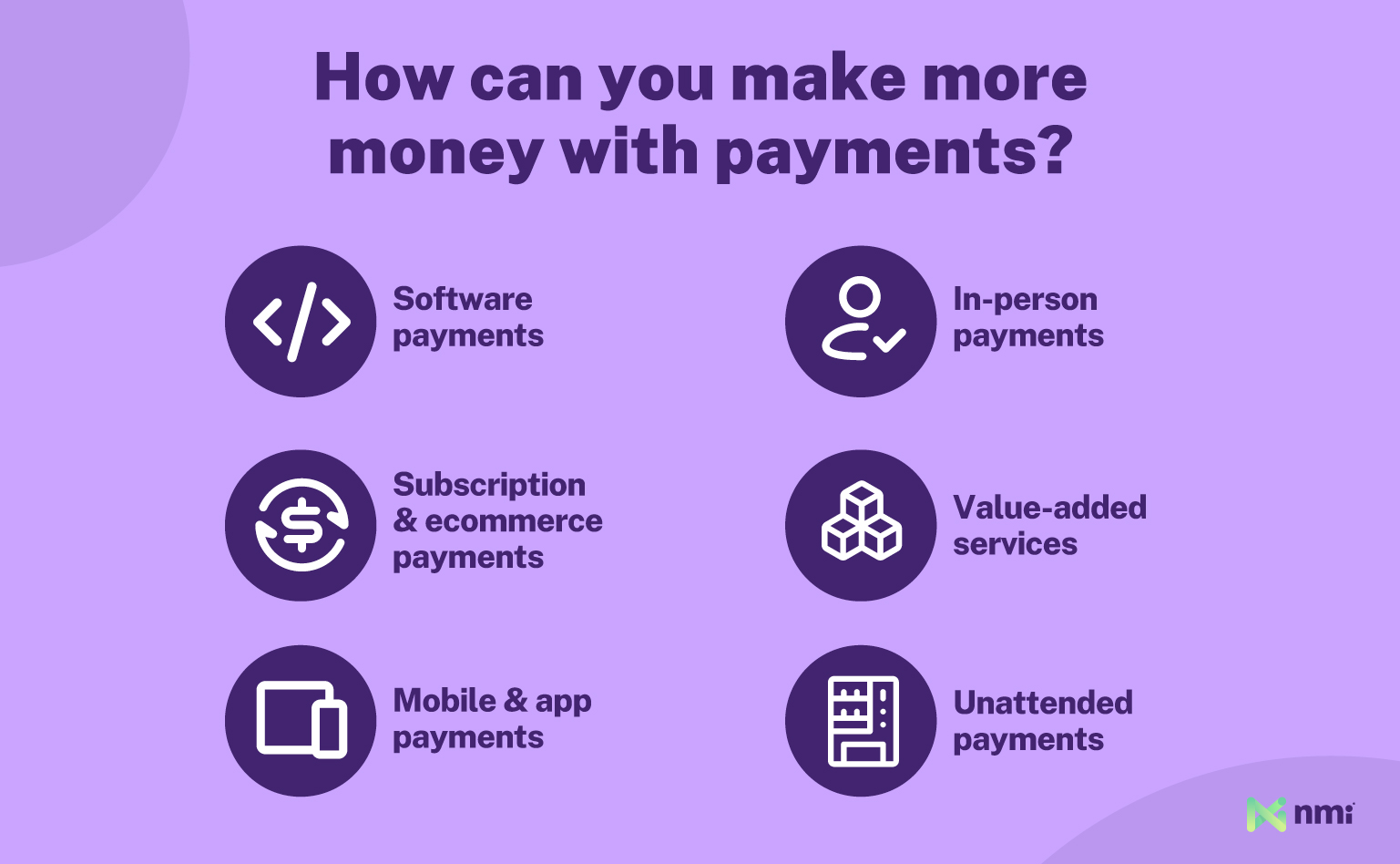If your software is only solving business problems but not monetizing payments, you’re missing a major opportunity. Embedded payments turn integration from a cost center into a revenue stream, letting you earn a share of the processing fees. Below, we take a look at how you can monetize payments across every channel — online, in-store, mobile and beyond.
Omnichannel Commerce: A Revenue Driver for Software Platforms
Omnichannel commerce seamlessly connects online and in-person shopping experiences with low-to-no friction. As our recent study found, “Modern consumers expect [omnichannel] as a standard offering. Convenience, especially in payments, drives decisions for 84% of consumers. They want to shop and pay when, where and how it’s most convenient for them. That creates both challenges and major opportunities for merchants and payment providers.”
As a software platform, enabling omnichannel payments means every channel becomes a chance to boost revenue, whether you’re powering medical practices, gyms, home services and everything in between. Consumers love it: they buy 70% more often when given omnichannel options and spend 34% more, translating to more transaction volume for you to monetize.
How Software Developers Can Monetize Omnichannel Payments
The opportunity for software platforms is twofold. First, more businesses are looking for software-driven payments, and over 50% of merchants now get their processing directly through an ISV (independent software vendor aka a software platform or SaaS company). At the same time, those merchants are looking to offer more payment options, which increases the number of payment services software vendors can offer them and the revenue generated from fees.
So, how can SaaS companies and software platforms take advantage of the omnichannel payments opportunity, and what avenues turn payments integration from a cost center into a revenue generator? Here’s where the revenue opportunities lie:
Monetizing In-Software Payments
The biggest opportunity for omnichannel payments lies within software platforms—like practice management systems in medical offices, membership systems in gyms, and other customer relationship management systems for service-based businesses. All facilitate payments, even if that feature isn’t already built in, but most require merchants to add third-party processing from a payment provider in order to work.
So what can software developers do differently? Become the payment provider. Or, more accurately, partner with a payment provider that will enable the software’s users to sign up for payments directly through the system (and share the revenue with the platform for any transactions that go through it). This is an incredibly powerful and low-barrier way to capture revenue from digital payments.
Monetizing In-Person and Mobile Payments
In-software payments are great, but with omnichannel commerce, we also need to think outside the “box.” Enabling a merchant’s end customers to pay in more ways is the ultimate goal. Acting as the frontline payment provider, you will find a variety of ways software companies can do that (with the help of their upstream payments partner).
The first is hardware. Many business users will want or need to offer in-person payments. While paying for a gym membership online or through an app is convenient, some members want to pay at the counter instead. In this case, the software vendor can offer hardware like contactless payments terminals as an additional, bundled service. The back-end payment partner issues and sets up the terminals. Meanwhile, by signing up the merchant for hardware on the front end, the software developer streamlines the process and earns a commission, boosting revenue.
Mobile payments are another great example. Mobile payments and digital wallets are some of the fastest-growing payment channels, and 83% of consumers want to use their mobile devices or other online platforms to pay. With the right partner, software platforms can offer features like text-to-pay, which allows merchants to send invoices and receive payments via text message — the second most popular brand communication channel after email.
Monetizing Value-Added Services
SaaS companies can offer their users a variety of value-added services to make their payment operations more convenient and powerful with enhanced capabilities. Because these services are offered by a platforms’ back-end payments partner, adding them to the mix opens up new revenue channels, and it requires effectively no extra work. Some of the value add-ons platforms can earn fees on include:
Tokenization and Secure Data Storage:
Storing customer payment data helps merchants in two key areas: subscriptions and ecommerce. Being able to send customers recurring bills is a key function for many merchants, especially those operating on a subscription or membership model, like gyms. Secure data storage is also great in ecommerce, where merchants often sell to the same customer multiple times and need to retain their payment information for a smoother checkout experience.
Tokenization and data storage services like NMI Customer Vault enable software and SaaS platforms to provide secure billing capabilities while shifting the responsibility for storing sensitive information and the liability for data breaches away from the merchant.
Automatic Card Updating:
A major headache for businesses that automatically charge recurring payments is expired credit cards. An expired card requires the customer to take action, which introduces friction. It could also lead to inadvertent cancellation of service if not caught. Offering merchants automatic card updates protects the continuity of their revenue stream and removes friction from their relationship with their end customers.
Advanced Fraud Protection:
Fraud is a huge concern in the digital payments space, especially in “card-not-present” environments like many in-software payments, where the physical card is never involved. A great way to improve the user experience while earning extra revenue is to offer advanced fraud detection and deterrence tools, like Kount’s AI-powered screening system.
Monetizing Unattended Payments
Unattended payments are transactions made in person but without a cashier involved. Ticketing kiosks, parking garages and vending machines are common examples of unattended payments, and all run on some type of software. Unattended payment systems often represent enormous transaction volumes that the software developer could capture if they were acting as the payment processor.

Monetize Your Software’s Payments: Getting Started
Traditionally, monetizing software-driven payments required the platform to become a payments company like an independent sales organization or payment facilitator — a difficult, expensive and time-consuming process. Today, it’s as simple as integrating services from a payments enablement platform like NMI.
NMI’s solutions are designed to make monetizing software-driven payments fast and easy. We help minimize the time our developers spend thinking about payment integration so they can focus on creating great software. Whether you’re using our application program interfaces (APIs), microsites or low-code/no-code solutions, we can get you up and running quickly with the help of our robust, interactive developers’ portal. And because our platform and products are a la carte, you can choose what to integrate into your systems, creating a payments solution ideally suited to your unique needs.
Let NMI handle the payment tech so you can keep building great software. To start monetizing software payments, reach out to a member of our team.





